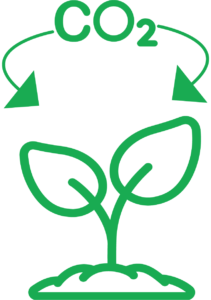A new University of South Australia report, commissioned by the Green Triangle Forest Industries Hub, provides evidence of the potential role emerging carbon markets could play in future forestry expansion, based on the Emissions Reduction Fund (ERF).
The report, titled, “Unlocking Opportunities for plantation forestry expansion in the Green Triangle: The Role of the Emissions Reduction Fund”, was a valuable document to inform foresters and farmers on the potential role of forestry in carbon mitigation across the landscape, Deb Kerr, CEO of the Victorian Forest Products Association (VFPA) said.
“This report indicates that a carbon price of $50 per tonne of CO2-e, could notionally unlock up to 120,000 hectares of new greenfield plantation estate across the Green Triangle with the area available ultimately influenced by a range of market factors,” Ms Kerr said.

Global demand for fibre-based products continues to grow, putting increased pressure on Victoria to get more trees in the ground to meet our current and future fibre needs. By 2050, this demand will outstrip supply by four to one.
“The Emissions Reduction Fund (ERF) provides a new pathway for forestry and farmers to work together. It is a growth opportunity that will also help meet agriculture’s carbon reduction ambitions,” Ms Kerr continued.
Just last week, the CSIRO released a new report on Australia’s carbon sequestration potential showing that plantation and farm forestry provides significant potential to absorb carbon through its living biomass, forest debris and harvested wood products. Importantly, the economically feasible sequestration potential of plantation and farm forestry is significant across the technology types assessed. The report notes that an increased carbon price is one of the enablers that could unlock current barriers to planting the right trees and the right place at the right scale.
“Victoria needs to get more trees in the ground if we want to be self-sufficient in producing timber. The Green Triangle is one of Australia’s most important forestry regions and one of the largest suppliers of wood products in Victoria,” Ms Kerr said.
“Key opportunities abound where foresters collaborate in partnership with farmers to put productive trees on their farms – trees which will not only deliver a carbon kick for the farmer and logs for mills but also improve farm productivity.
“A higher carbon price, leading to an expansion of the plantation estate across the Green Triangle would give certainty to the over 8,000 people currently directly and indirectly employed by forest industries in the region. It would also unleash new domestic manufacturing investment. This means more jobs and more prosperity for our regions and our state.
“While the current carbon price is hovering around $30 per credit, we only need to look at the equivalent prices in New Zealand and Europe to see that this value will increase as we move to a decarbonised economy. VFPA look forward to working with primary producers to secure a solution that benefits all,” Ms Kerr concluded.
ENDS
